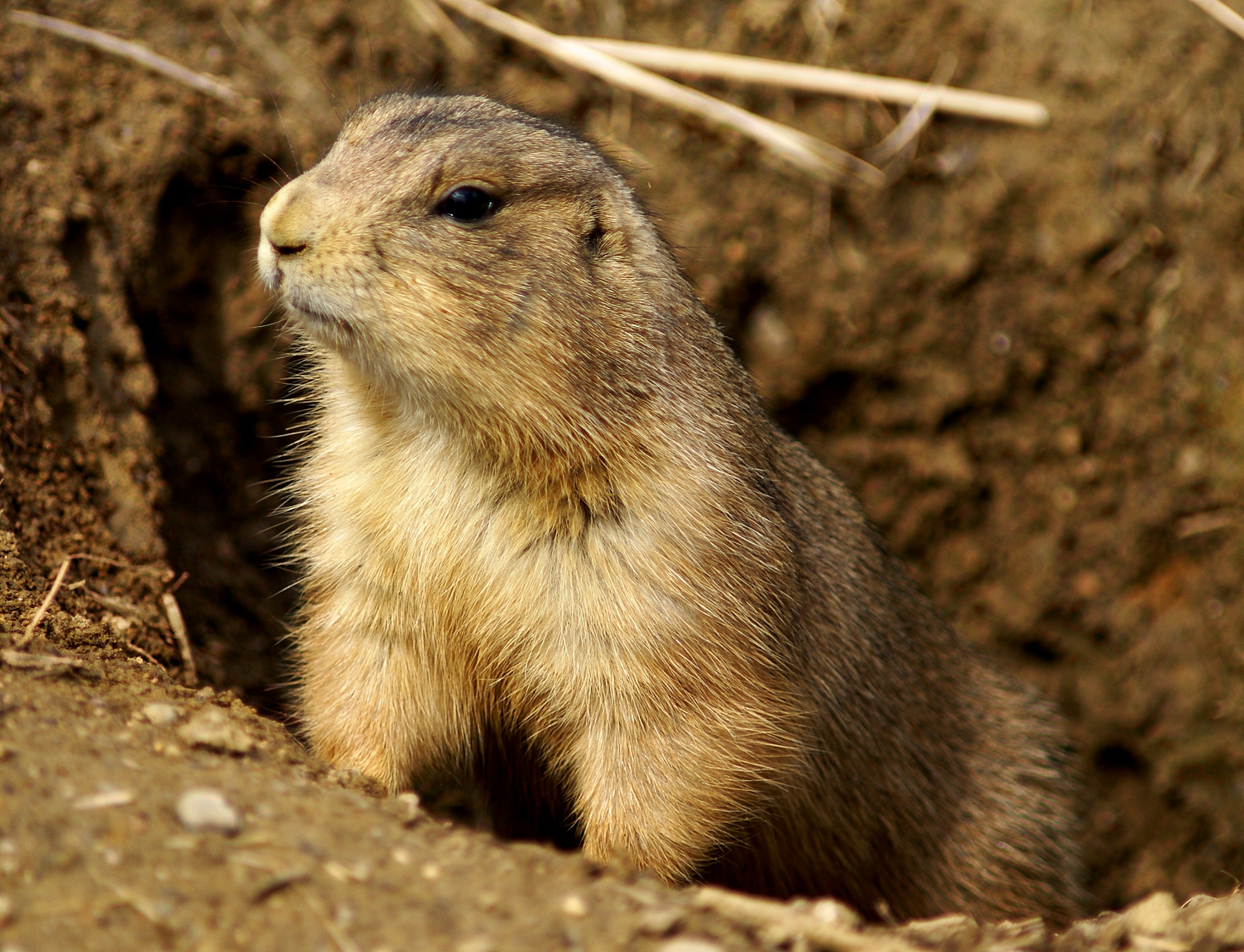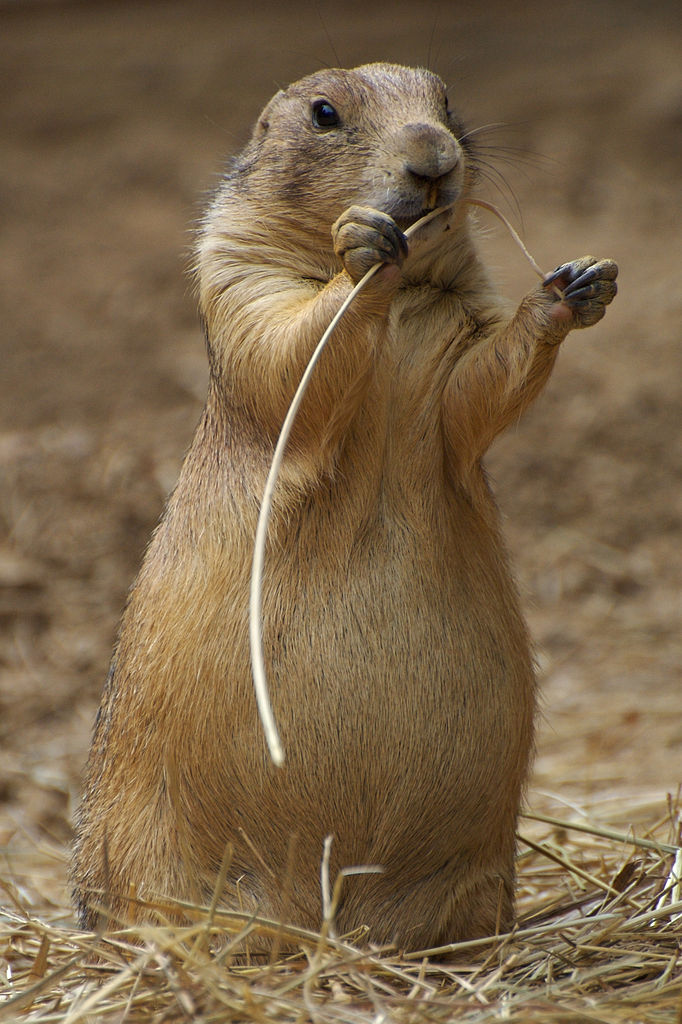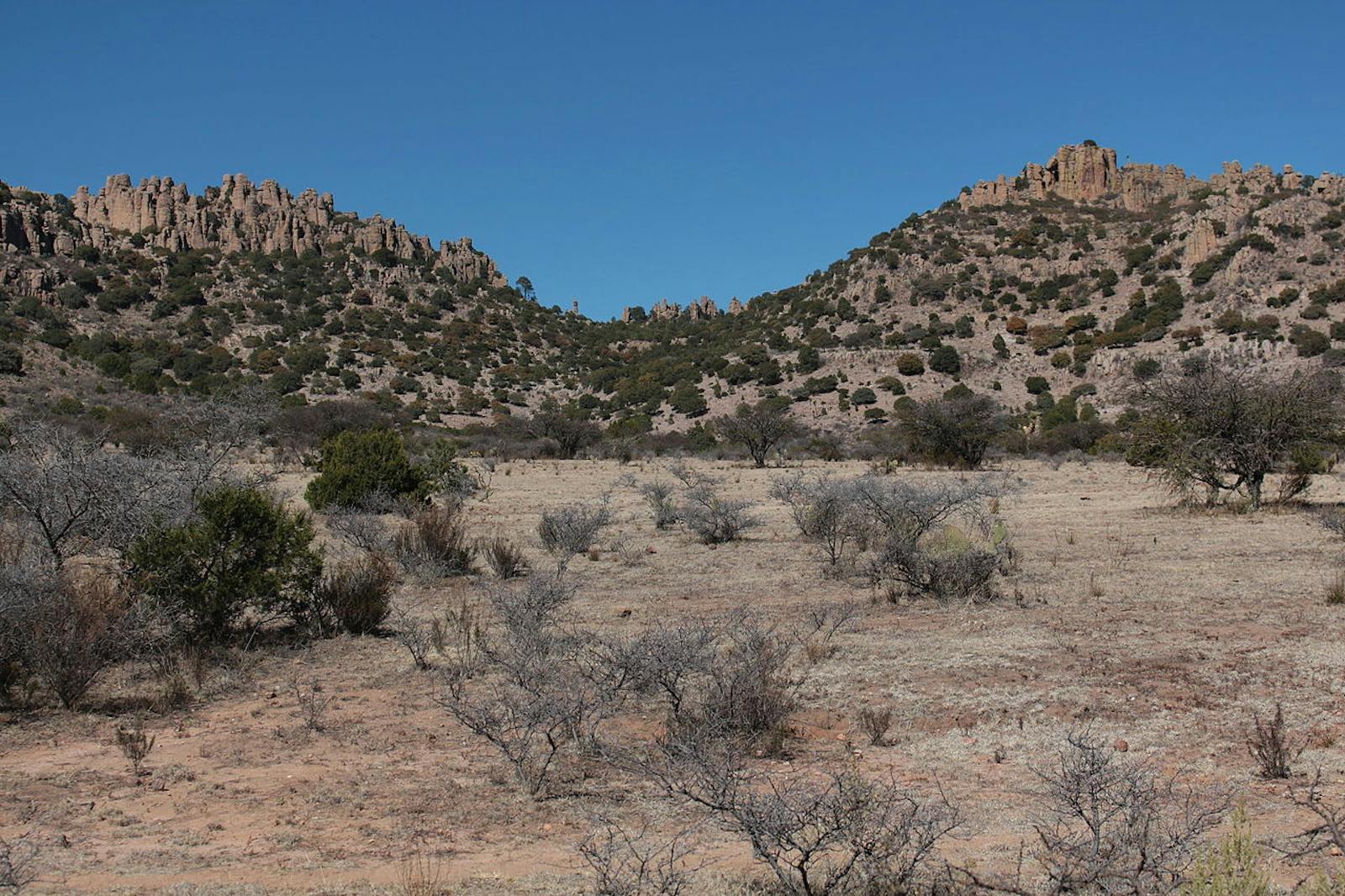Meseta Central Matorral
The ecoregion’s land area is provided in units of 1,000 hectares. The protection goal is the Global Safety Net (GSN1) area for the given ecoregion. The protection level indicates the percentage of the GSN goal that is currently protected on a scale of 0-10. N/A means data is not available at this time.
Bioregion: Sierra Madre Forests & Mexican Drylands (NA29)
Realm: Northern America
Ecoregion Size (1000 ha):
12,554
Ecoregion ID:
432
Protection Goal:
16%
Protection Level:
3
States: Mexico: ZA, SL, CO, DG, NL
The Meseta Central Matorral ecoregion is an arid lowland plain separating the massive mountain ranges of the Sierra Madre. There are many endemic species (found nowhere else) in this ecoregion because the uplift of surrounding mountain ranges and the development of pine-oak forests there isolated the ecoregion from other regions of similar climate and promoted independent evolution of new species.
Matorral is a Spanish term for Mediterranean shrubland but later was expanded to include xeric shrublands in Mexico, Chile, and elsewhere. This ecoregion lies to the south of the Chihuahuan Desert. Its eastern, northeastern, and southeastern boundary is entirely with the Sierra Nevada Oriental Pine-Oak forests, scattered patches of which also occur on peaks across the northern and eastern portions of the ecoregion.

The flagship species of the Meseta Central Matorral ecoregion is the Mexican prairie dog. Image credit: Creative Commons
To the south lie the Central Mexican Matorral and patches of Trans-Mexican Volcanic Belt Pine-Oak Forests. To the west lie the Sierra Madre Occidental Pine-Oak Forests, which occur on highlands in a mosaic with the Meseta Central Matorral. Finally, small portions of this ecoregion border the Sinaloan Dry Forests in the southwest. While most of the Meseta Central Matorral consists of desert plains, it also contains hills and some mountains rising to around 2,400 m in elevation. The soils are largely derived from sedimentary rocks, but also from metamorphic and volcanic origin near the mountains.
This ecoregion has an arid subtropical climate, with annual precipitation levels below 500 mm. Vegetation varies along gradients of elevation, exposure, and soils, and is quite species-rich. Some 16 genera of woody plants are endemic to this ecoregion.
The dominant plant species across the ecoregion are Mexican tree yucca, giant Spanish dagger (also a yucca), palm soapwort (another yucca), and creosote bush. Among the other plant species in these communities are huisache (sweet acacia), blue grama, blue barrel cactus (which goes by several colorful common names, including devilshead, horse maimer, and horse crippler), strawberry hedgehog cactus, leatherstem, desert mimosa, cactus apple, mesquite, and hairy tridens. The most common plant association in the northern portion of the ecoregion, in the transition to the Chihuahuan Desert, is dominated by American tarwort and creosote bush.
In the states of San Luis Potosi and Zacatecas, common plants include lechuguilla, needle-leaf hardy agave, side-oats grama, red grama, dwarf prairie clover, silver sotol, Mexican fire barrel cactus, ocotillo, cane cholla, and many others. Unique plant communities with endemic species occur on mountain peaks and slopes with unusual substrates.
This ecoregion is known for its highly specialized relationships between plant species and their pollinators. Some species of agave, for example, have evolved to flower synchronously with the migration of their bat pollinators from Central America to North America. Reptile endemism is high in this ecoregion.
Among birds, Worthen’s sparrow is endemic to the ecoregion. Other representative birds include white-winged dove, Inca dove, greater roadrunner, common poorwill, white-tailed kite, Harris’s hawk, black phoebe, horned lark, western scrub-jay, Chihuahuan raven, verdin, cactus wren, rock wren, canyon wren, black-tailed gnatcatcher, phainopepla, loggerhead shrike, crissal thrasher, pyrrhuloxia, canyon towhee, Botteri’s sparrow, black-throated sparrow, and Scott’s oriole.
Characteristic mammals include yellow-faced pocket gopher, coyote, and the endangered Mexican prairie dog, which has been reduced to less than 4% of its former range due to poisoning by ranchers.

Mexican prairie dog. Image credit: Creative Commons
Only about 9% of this ecoregion is intact, 5% within and 4% outside of protected areas. Conversion of land to agriculture and intensive livestock grazing are the most serious threats to this ecoregion. Fires used to clear land for pasture are highly destructive to the native vegetation. Mining, road expansion, urban growth, and illegal collection of rare cacti and other desert plants for the horticultural market are additional major threats.
Priority conservation actions for the next decade are to: 1) reduce livestock grazing across the ecoregion; 2) greatly expand the network of protected areas to encompass all remaining intact habitat and better represent ecosystem diversity; and 3) expand law enforcement to prevent the collection and sale of rare cacti and other plants.
Citations
1. Meseta Central Matorral. World Wildlife Fund. https://www.worldwildlife.org/ecoregions/na1307
2. MacMahon, J.A. 2000. Warm deserts. Pages 285-322 in M.G. Barbour and W.D. Billings, eds. North American Terrestrial Vegetation, 2nd edition. Cambridge University Press, Cambridge, U.K.
3. Howell, S.N.G., and S. Webb. 1995. A Guide to the Birds of Mexico and Northern Central America. Oxford University Press, Oxford, U.K.


